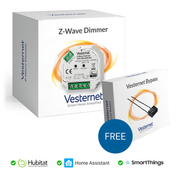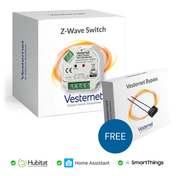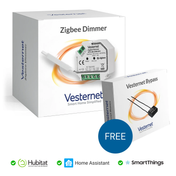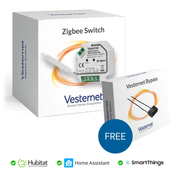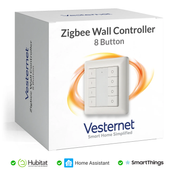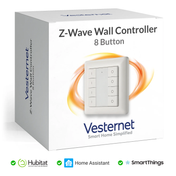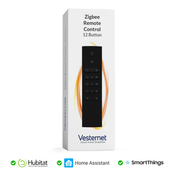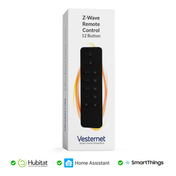This guide shows how to use Thermostatic Radiator Valves (TRVs) to create heating zones in a central heating system.
Separating your home's heating into 'Zones' enables you to control each zone individually. For instance, during the day you may want all of your heating turned off except for one or two rooms, maybe you work from home so you just need your office heating, rather than heating the whole house.
Traditionally, if you wanted heating zones like this, you would need to design them at the time the heating system was installed, as each zone would need separate hot water pipes and control valves.
Using Z-Wave home automation, creating zones is quite easy and just needs Thermostatic Radiator Valves installing on some of the radiators, so those radiators can be controlled wirelessly.
This guide looks at how to do this and uses an existing Vesternet guide as it's basis - Creating a Heating Control System with VERA
Components
For this project we've used a Z-Wave home automation system comprising of:
- Secure Wall Thermostat - monitors the room's temperature and triggers the heating when required
- Secure Boiler Receiver (single channel relay) - controls the boiler or heating source
- Danfoss Thermostatic Radiator Valve - controls the temperature of individual radiators
- Vera Lite - central Z-Wave controller runs the schedules and scenes to control the heating system
Wall and Radiator Thermostats
In this example we use a Wall Thermostat as well as Radiator Thermostats (TRVs), this is good practise and would be required by building regulations.
The Danfoss TRVs do not report room temperature to the Z-Wave network, so if the system included no wall thermostat, there would be no way to turn the boiler receiver off when the room temperature was high enough.
This would create a scenario where all the radiators are turned off, as the Danfoss thermostats have reached their setpoint temperature, but the boiler is still on. This would result in the boiler sending hot water around the system (but not through the radiators) and therefore wasting energy and money.
To prevent this scenario, the wall thermostat has 'ultimate' control of the boiler - the wall thermostat controls the boiler receiver and the radiator thermostats just control their individual radiators. The wall thermostat controls the boiler receiver based on its setpoint and the room's ambient temperature.
This is also know as 'Boiler Interlock' and is required by current building regulations.
Heating Zones and Scenes
In this guide we will use an examples of how to control a simple Zoned Heating System.
This scenario has two zones:
- Zone A - follows the heating temperature and schedule of the main wall thermostat - no TRVs are fitted to this zone's radiators
- Zone B - has TRVs fitted to its radiators to enable Zone B to be controlled at a lower temperature during parts of the day
This scenario enables you to run your main heating system as normal (controlled by the wall thermostat), and allows a new zone to be created that can be independently turn off or heated to a lower temperature, such as bedrooms and dinning rooms.

Heating Profiles
The heating profiles for this scenario could look like those in Figure 1.
 Figure 1 - Heating Schedules and setpoint temperatures
Figure 1 - Heating Schedules and setpoint temperatures
To enable VERA to control this scenario we will adapt the four scenes used in the original guide - take a look at Creating a Heating Control System with VERA to understand how we created these original scenes.
- Morning - scheduled at 6.00am to change wall thermostat setpoint to 18°C and the Zone B Danfoss TRVs set to 10°C
- Day - changes wall thermostat setpoint to 10°C at 8.30am - no need to change the TRVs as the wall thermostat has 'ultimate' control
- Evening - wall thermostat setpoint changed to 20°C at 5.00pm and Zone B TRVs set to 18°C
- Night - thermostat reduced to 3°C at 10.30pm
The Danfoss TRV's setpoint is set in the same way as the wall thermostat setpoint within the VERA scene.
Summary
This is guide is intended to be an introduction to Zone heating control, we will look at other scenarios and using other controllers in future guides.

